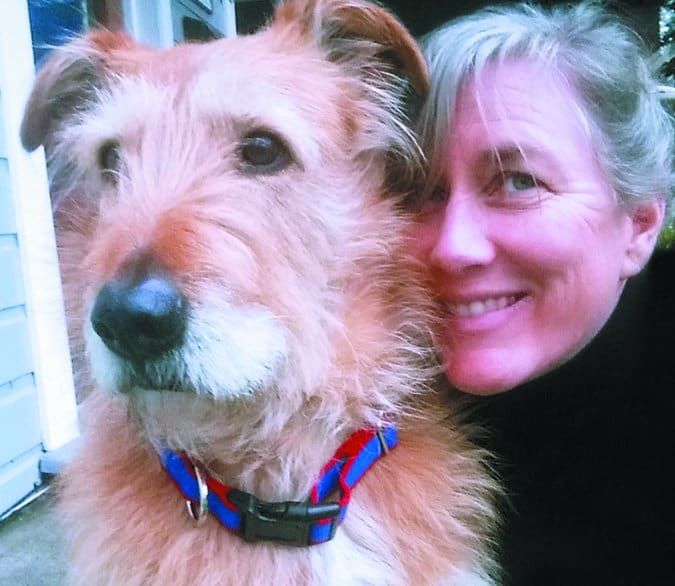I know I’ve hit a spot that’s going to be sensitive for some of Whole Dog Journal‘s readers when my copy editor sends an article back to me covered with personal comments mixed in with the grammatical and typographical corrections she’s supposed to be making. But in the case of trainer Nancy Tucker’s article “How Long is Too Long to Leave A Dog Alone?“, even as she was writing it, the author herself expressed concerns that the piece might be upsetting for some people to read.

However, both WDJ’s Training Editor Pat Miller and I love the article, even though we recognize that the points made by its author might be hard for some dog owners to accept, at least at first. Our hope is, though, that it makes people think a little about a very commonly accepted practice; are they unwittingly asking their dogs to do something that is very difficult, with little or no recognition of the hardship?
The thrust of the piece is this: Many dogs find staying at home alone all day to be anxiety-producing and challenging, causing a good number of them to exhibit behaviors that their owners find irritating (barking, chewing, inappropriate elimination indoors, etc.). Educated trainers recognize these behaviors as coping mechanisms – things that some dogs do in an effort to relieve their anxiety and boredom and make it through another day – not, as some people believe, things the dogs do out of spite. Experienced trainers have learned that it is far more fruitful – and humane – to educate owners about their dogs’ emotional and biological needs and take steps to improve the dog’s quality of life, than to try to stop the problematic behaviors with crates.
Of course, not all dogs find being home alone onerous. The advent of web cams and home-monitoring software has allowed many owners to observe their dogs sleeping on the sofa almost all day long – a reassuring vision, to be sure. But even in the case of dogs who seem to sleep all day, it shouldn’t hurt to ask their owners: Is this enough?
Compared to life on a chain or ownerless on the streets, our dogs’ lives – mostly indoors, with plush beds and enriching toys and plenty to eat – seem pretty darn good. Who among us has not felt that our own lives, by comparison, are a lot harder? After all, we have to work all day to support their leisure-filled lifestyles!
But we’re asking you to consider the social nature of the dog, just for a moment. His forbears chose to be our companions thousands of years ago, and when given an opportunity to choose, it’s his strong preference to be with us almost all of the time. Please just think about this if your dog shows signs of being distressed by being home alone, or, especially, if you are planning to bring a puppy home soon. And then consider whether any of Tucker’s suggested remedies might be available to you. Your dog will appreciate it more than he can ever say.







I’m retired so now I can spend much more time with my dog. When I was
it was a whole nother matter. So
I got the dog a cat. They both loved it. Am I just kidding myself or have others found this helpful too?
Hello,
Thank you for the great article, this is slightly off topic:
How do you believe this relates to dog trainers at local shelters when dealing with a fence reactive dog? I am a local volunteer, for about 2 years now, and am having an issue with the shelter I volunteer at. There is a dog, Riley, who is fence reactive but has not bitten a person or dog. There were several instances where he growled at a young employee when she walked by. He has since been removed from all playgroups, and volunteers which he had a relationship, including me and 2 other gentlemen. He would sit, shake, and stop barking when told “No” if I walked by with another animal. He has been isolated in his kennel, 5 ft x 25 ish feet, put on medication for over 3 months with his behavior at best slowly deteriorating (judging by his fence reactions).
We have other dogs that have bitten animals, killed chickens, and had other unsavory behavior, none of them have been treated like this dog has. I have begun breaking the rules and sneaking into his kennel to give him our much-missed forehead hugs and face kisses. I couldn’t stand the way he would look at me, “Hey best-friend, why don’t you take me out like the other dogs anymore”.
When approaching the subject with the shelter, I am met with strong resistance. I have no formal training, but very much prefer working with larger dogs that have behavior issues, and have had great results. How would I academically approach the trainer and question her prolonged isolation and the medicine she is giving him?
Is there a reason why prolonged isolation would a benefit?
At what point do we say, “The problem is getting worse and not better”?
Thank you very much for your time, I very much look forward to hearing back from you.
J